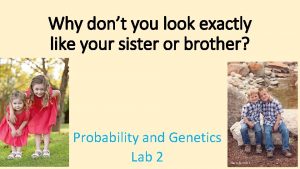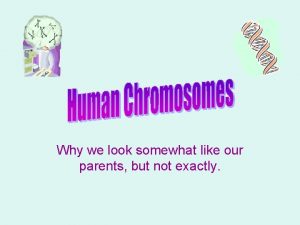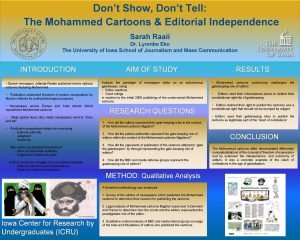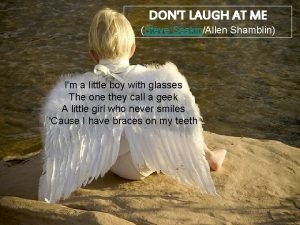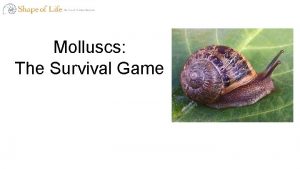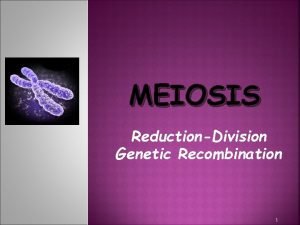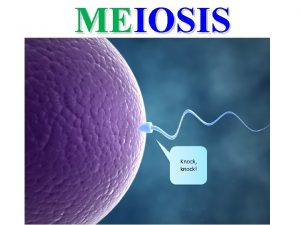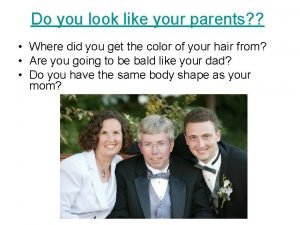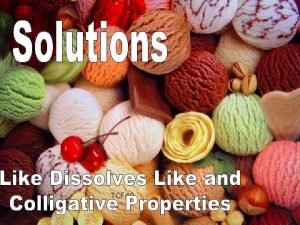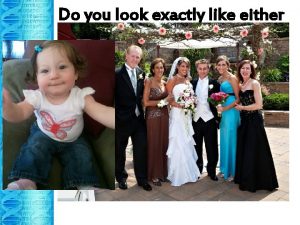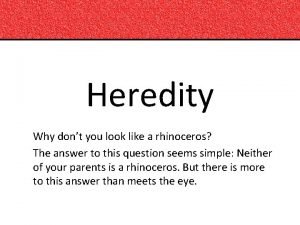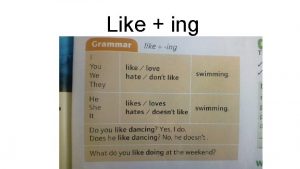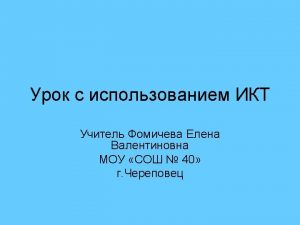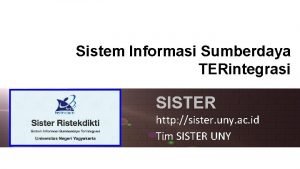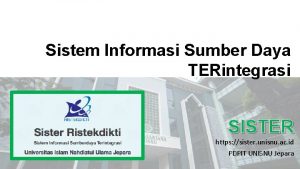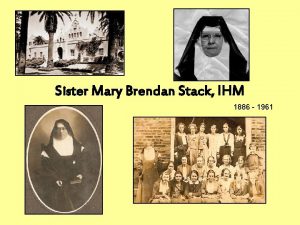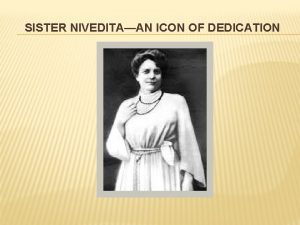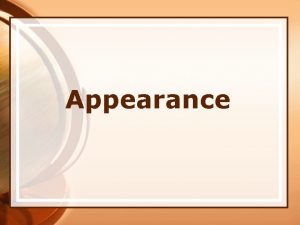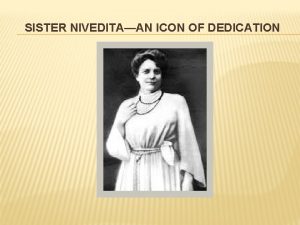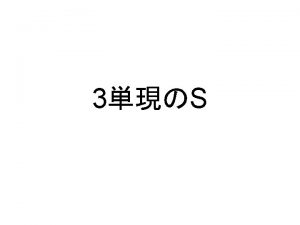Why dont you look exactly like your sister




















![So, with TWO TRAITS: 1 is for TAIL LENGTH [S or s] • SHORT So, with TWO TRAITS: 1 is for TAIL LENGTH [S or s] • SHORT](https://slidetodoc.com/presentation_image_h2/50f16590e45d294a4be7d4b6d6f65ad4/image-21.jpg)


- Slides: 23

Why don’t you look exactly like your sister or brother? Probability and Genetics Lab 2

PROBABILITY • Chance of getting HEADS on a coin flip? • 50%, right? ; we all know that. • But where does the # come from?

PROBABILITY • Heads is ONE outcome, out of TWO that are possible. • So we put the one we are interested in on TOP of a fraction, and the total # of possibilities on the bottom. • In this case, 1 on top… 2 on the bottom • 1/2 • Divide 1 by 2…………=0. 5 • That’s our DECIMAL

PROBABILITY • That’s our DECIMAL • Probability decimals will always be between 0 -1 • When we talk about %, all we are doing is multiplying the decimal by 100…so, • ½ = 0. 5 • 0. 5 X 100 = 50%

PROBABILITY • So now, what’s the probability of rolling a 2 on a single die? • 1/6 • =0. 166666 (the DECIMAL; ALWAYS between 0 -1) • Convert to % => 0. 16666 x 100 = • 16. 66 %

PROBABILITY • OK, so what about the probability of rolling a 2 TWICE IN A ROW? • The probability of both events happening is the probability of the first one… TIMES (X) the probability of the second one. • 1/6 x 1/6 • 0. 16666 x 0. 16666 • =0. 02777777 • (You want % ? . . Decimal X 100 = 2. 7777 %

One DIPLOID cell

RANDOM ASSORTMENT: Chromosomes that came from DAD and from MOM do NOT stay together when gametes are produced DIPLOID cell Meiosis Produces gametes (eggs/sperm) with HALF the # of chromosomes as regular cells. Gametes are “haploid” HAPLOID gamete

“Crossing over” adds more variation to gametes

These are the GAMETES (sperm or eggs) Gametes are HAPLOID …meaning they have HAlf as many chromosomes as “normal” (somatic) cells)

Of our 23 PAIRS of chromosomes, one pair determines if we are male or female. Those two chromosomes are called SEX CHRMOMSOMES.

Using ONE GENE (trait) These are the GAMETES that parent can produce GENOTYPE of one parent


Random Assortment of chromosomes in meiosis… …means that the chromosomes from your mom (or dad) do NOT stay together in your gametes.



Some TRAITS have a dominantrecessive relationship: A DOMINANT trait will be expressed in the PHENOtype (what you SEE), even if only one of the chromosomes has that trait. So a person with one ALLELE for BROWN eyes and one allele for BLUE eyes (GENOtype: Bb) will have a PHENOtype of BROWN EYES

Let’s make sure we understand some terms: An ALLELE is a certain version of a gene/trait. (gametes have ONE allele per trait) We have two alleles of most genes (one from mom, one from dad) If both alleles are the same, that individual is called HOMOZYGOUS for that trait. If the alleles are different: HETEROZYGOUS

NOW with 2 traits One parent has these genotypes for TWO different traits: Aa (heterozygote) and Bb (heterozygote)

Now, using TWO GENES (2 traits) Gametes from MOM Gametes from DAD This is the box you will start with. You will write the gametes above and beside the columns and rows
![So with TWO TRAITS 1 is for TAIL LENGTH S or s SHORT So, with TWO TRAITS: 1 is for TAIL LENGTH [S or s] • SHORT](https://slidetodoc.com/presentation_image_h2/50f16590e45d294a4be7d4b6d6f65ad4/image-21.jpg)
So, with TWO TRAITS: 1 is for TAIL LENGTH [S or s] • SHORT tail is dominant, so SS or Ss will make a short tail; • ONLY ss will have a long tail 1 for FUR COLOR [B or b] • Brown is dominant, so BB or Bb will make brown fur • ONLY bb will have white fur

How to write (geno-/phenotype) RATIOS Phenotypes: 3 brown: 1 blue (also OK= ¾ brown: ¼ blue) Genotypes: 1 BB: 2 Bb: 1 bb (also OK= ¼ BB: 2/4 Bb: 1/4 bb)

How to write (geno-/phenotype) RATIOS Phenotypes: 9 brown/short: 3 brown/long: 3 white/short: 1 white/long (also OK= 9/16 brown/short…) Genotypes: We wont make you do this if it’s so complicated
 You look like your sister
You look like your sister Look left right
Look left right Dont ask
Dont ask Why do you look somewhat like your parents
Why do you look somewhat like your parents Dont ask dont tell political cartoon
Dont ask dont tell political cartoon Dont laugh at me dont call me names
Dont laugh at me dont call me names What’s the moon snail’s strategy to catch the cockle?
What’s the moon snail’s strategy to catch the cockle? Why does ethanol look like water but behave more like wood?
Why does ethanol look like water but behave more like wood? Non homologous chromosomes
Non homologous chromosomes Prophase ii
Prophase ii You cant manage what you dont measure
You cant manage what you dont measure If you can't measure it it doesn't exist quote
If you can't measure it it doesn't exist quote Why why why why
Why why why why Dont look up tick
Dont look up tick Which features of the sun look like huge cloudlike arches?
Which features of the sun look like huge cloudlike arches? I love you pablo neruda
I love you pablo neruda George best quotes
George best quotes Wh tongue twisters
Wh tongue twisters What do your parents look like
What do your parents look like What did you do last weekend writing
What did you do last weekend writing Design your dream school what does it look like
Design your dream school what does it look like Where did you do last weekend
Where did you do last weekend What __________ you _________ last weekend?
What __________ you _________ last weekend? Why water and oil dont mix
Why water and oil dont mix
